- Share this article
- Subscribe to our newsletter
Global Crop Diversity Summit 2023 – why seedbanks matter
Transforming our food systems towards resilience and sustainability is right at the top of the international agenda. Congresses and high-level meetings addressing this issue regularly discuss adjustments that have to be made to achieve this. The decisive role that seedbanks play in this context is often forgotten. The Global Crop Diversity Summit held in Berlin, Germany, in mid-November, was meant to change this. The Summit was organised by the Global Crop Diversity Trust (Crop Trust), an international not-for-profit organisation based in Bonn, Germany.
“Food insecurity is coming back, at a time where the world is on fire, with global temperatures rising faster even than anticipated or predicted. We simply can’t afford to lose the crop diversity we have on Earth,” Stefan Schmitz, Executive Director of the Crop Trust, had warned at a press conference in the run-up to the event. The industrialisation of agriculture has resulted in only a fraction of the existing crop variety being used today, and genetic diversity continues to shrink in fields. Furthermore, plant breeding concentrated on yield increase for many years. But against the background of climate change, it is becoming more and more important that plants can withstand stress, such as heat, drought or salinity. These are precisely the features which many of the ancient varieties and wild relatives of our food crops bear. This was why it was so important, Schmitz argued, to conserve these plants in seed banks (or gene banks) and be able to provide farmers with them when needed. But these unique guardians of genetic diversity are under threat – for a wide range of reasons.
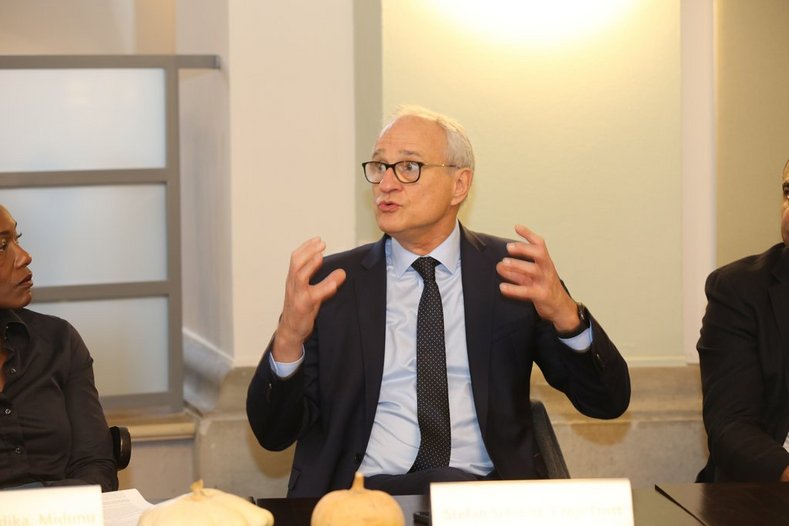
Stefan Schmitz, Executive Director of the Crop Trust. Photo: Franz Dejon/IISD.
Conflict and climate change
One of these reasons is political instability or conflict. “I’ve been involved with the Ukraine seedbank teams since those first two days in February last year,” Lise Lykke Steffensen, Director of the Nordic Genetic Resource Centre (NordGen), reported. “They were actually sitting in bunkers, and I texted the director and said, ‘How are you doing?’ He answered: ‘Just please send some help, send something, do something.’” The Ukrainian seedbank was the 10thlargest collection in the world, making it extremely important not only for Ukraine, but also for global food security, Steffensen stressed. The seedbank contains over 106,000 different seeds, lots of them endemic species. NordGen and, later on, Crop Trust have been financially supporting the colleagues in Ukraine so that they can at least carry on with their work on a rudimentary basis. Over 50,000 seeds had been duplicated, and a copy of this was now stored in safe places, Steffensen said.
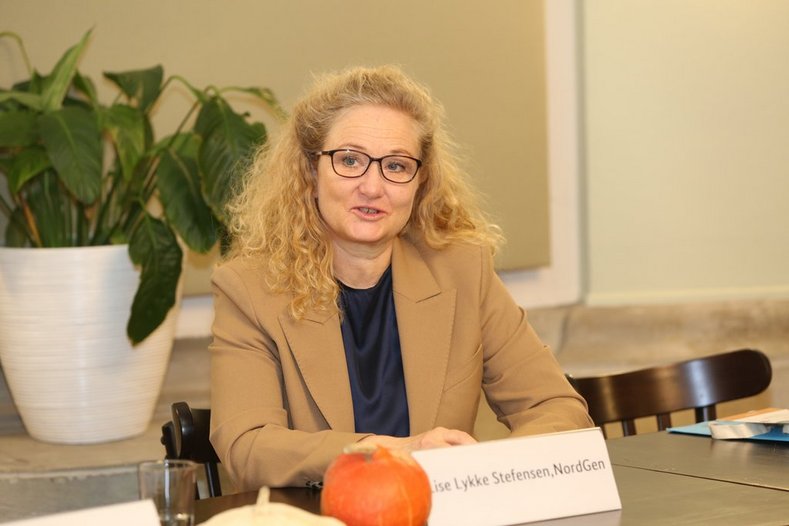
Lise Lykke Steffensen, Director of the Nordic Genetic Resource Centre (NordGen). Photo: Franz Dejon/IISD.
The creation of safety duplicates was also a high priority in the Pacific region, reported Karen Mapusa, Director of the Land Resources Division of the Pacific Community. However, the reasons here are very different. Genebanks in the Pacific region are regularly threatened by climate change impacts such as typhoons. Mapusa remarked that this was all the more dramatic since, as a result of lifestyle changes, an ever growing section of the population were suffering from the triple burden of malnutrition – undernutrition, micronutrient deficiencies and overweight. At the same time, traditional knowledge of food and medicinal plants (and hence also healthy diets) was going lost more and more – a problem that gene banks could address.
Neil Watkins, Deputy Director, Program Advocacy and Communications at the Bill and Melinda Gates Foundation, explained how dangerous the lack of species diversity could be in agricultural production, taking the example of bananas. Cavendish variants accounted for roughly 60 per cent of global banana production. But as all of them were genetically identical clones, Watkins explained, they were at high risk of being wiped out by pests and diseases. Integrating wild crop varieties in innovative crop breeding programmes could counter this.
A plea for in situ and ex situ conservation
In the panel discussions, several speakers stressed that that crop diversity should be systematically used by farmers and local communities, thus being saved and maintained “outside the freezers”. In other words, it ought to be ensured that seed banks “move from museums to the farm and the plate”. One practical example of this came from Bhutan. Asta Maya Tamang, from the Bhutan National Biodiversity Centre, told the meeting about a revival of the production of buckwheat. Once a staple food, this crop was gradually dying out in the country. In order to stimulate not only production, but also consumption, her organisation was supporting farmers in developing a variety of buckwheat products. Bhutan’s national gene bank contained 3,500 samples from 46 crop species, Tamang told the audience.
Francisca Azevedo, a consultant in the field of agrobiodiversity, pointed out that small-scale farmers not only produced food, but also contributed to breeding. Genebanks were important, but in situ conservation – i.e. conservation on the farms – was at least just as important. Here, she called on those responsible to ensure that small-scale farmers were not only research participants but also development partners and benefited from associated gains. Michael Windfuhr, Deputy Director of the German Institute for Human Rights, stated that farmers often lacked knowledge about how to access seed banks. Here, agricultural extension had a role to play.
Preserving seeds and biodiversity through deliciousness
Ghanaian chef and entrepreneur Selassie Atadika presented a very different approach to the meeting. She invited the participants to an – imaginary – culinary tour. They were asked to close their eyes and imagine a dish they especially liked to eat – the tasty ingredients, what it looked like and its smell. And precisely the moment they had gained a mental image of their favourite dish, they were to open their eyes and imagine that this dish no longer existed. For this was what had happened to the Ghanaian chef when, having spent several years in New York/USA, she returned to her country and noticed that a lot of foods and ingredients which she had eaten as a child were no longer available. Instead, imported food was dominating the shops and markets. “I was trying to figure out how we could bring these traditional foods and ingredients onto the table, and I slowly ended up getting involved in finding the seeds myself and trying to understand what was happening with our food system.” With the Midunu Insititute (in her mother’s language, Ewe, Midunu means “Let us eat”), she has set herself the goal of preserving Africa’s culinary heritage and thus giving back cultural foods the value that they deserve.
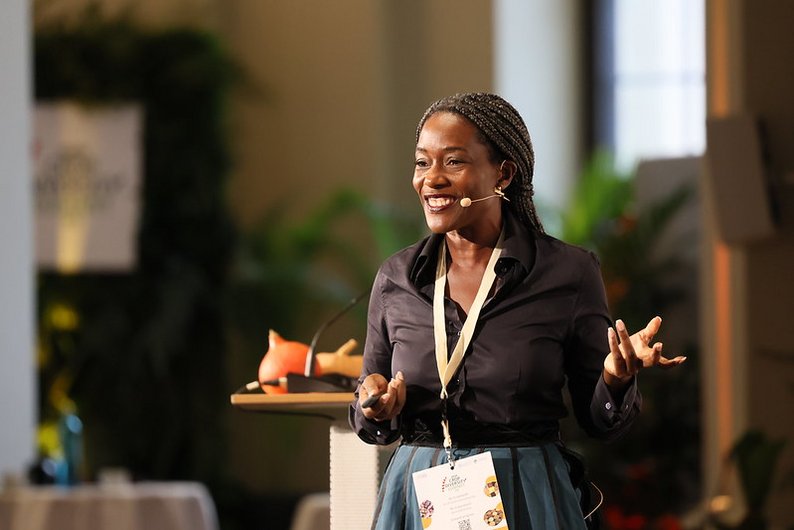
Ghanaian chef and entrepreneur Selassie Atadika. Photo: Crop Trust.
Alejandro Argumedo, the Coordinator of the International Network of Mountain Indigenous Peoples, also presented some of his childhood memories: waking up to the aroma of a dish cooked by his grandmother with differently coloured and shaped potatoes, mixed with herbs. “Nothing will change until we change our values and go back to the roots,” he told the meeting, stressing the need to connect food to its source. Indigenous Peoples and local communities had accumulated thousands of years of knowledge and expertise on how to ensure food system diversity and resilience. And this had to be taken advantage of.
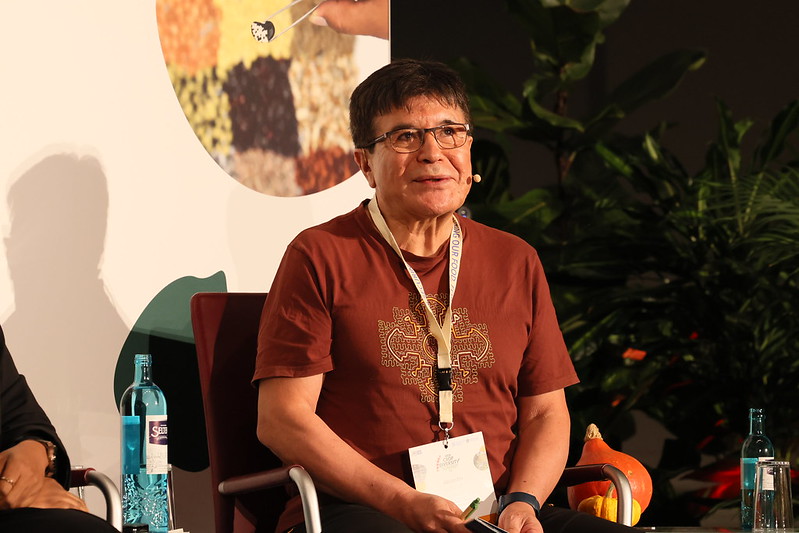
Alejandro Argumedo, the Coordinator of the International Network of Mountain Indigenous Peoples. Photo: Crop Trust.
Long-term funding needed
After this excursion to the emotional aspects of crop diversity and conservation, Lise Lykke Steffensen addressed a fundamental problem which all seedbanks around the globe were struggling with: chronic underfinancing. In most countries, the banks don’t enjoy any priority, as they are not seen as a resource power or knowledge base. “Seed storage can be very unsexy to those who don’t realise how important it is!” Steffensen explained. And most actors were not aware that the process was not simply about placing seed collections in the fridge, added Zakaria Kehel, Head of Genetic Resources, Pre-Breeding and Genebank operations at the International Center for Agricultural Research in the Dry Areas (ICARDA). The seed had to be maintained and monitored to see if seeds could be germinated when sent to others. Energy supply was also an issue as it had to be ensured that the seed was kept in good condition. In addition, seedbanks were responsible for make not only the seeds available, but also the information – in order to be able to quickly provide the corresponding material with the desired features in response to requests from farmers or another seedbank.
“Seed storage can be very unsexy to those who don’t realise how important it is”
But who is responsible for financing all this? Even though funding comes from many places, with most seedbanks being funded by donors, Steffensen clearly stated that it was first and foremost a national responsibility to conserve the genetic resources of one’s country and our world. She reminded the meeting that all countries had committed to the targets from the Global Biodiversity Treaty after COP15. What she was hoping for was a gene bank with long-term funding which conducted innovative research on genomics and phenomics (the systematic study of traits that make up the set of observable characteristics, the phenotype) and ensured responsiveness to requests.
Silvia Richter, Rural 21


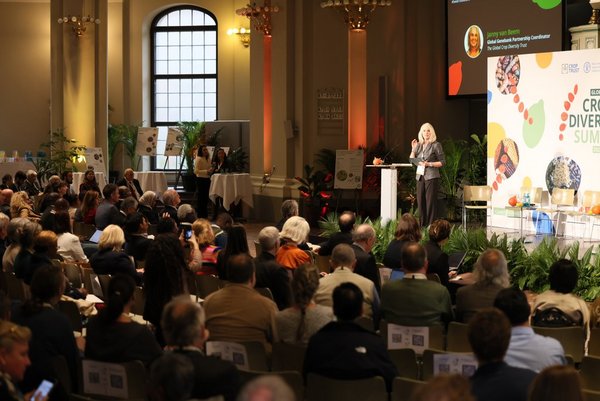


Add a comment
Be the First to Comment